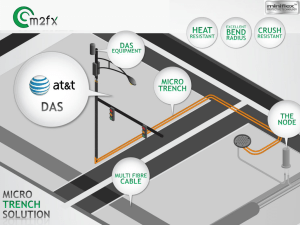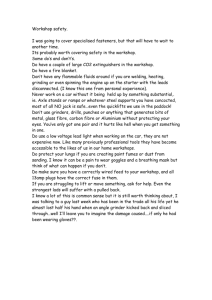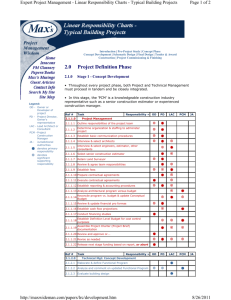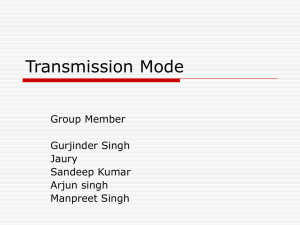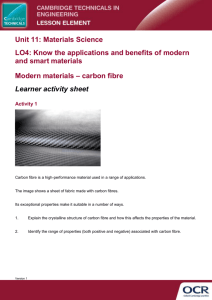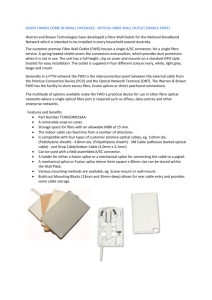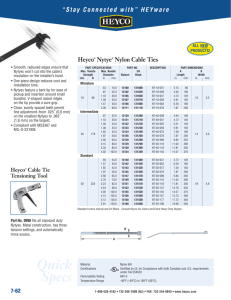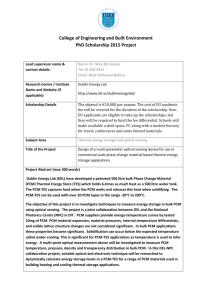LINE SIDE
advertisement
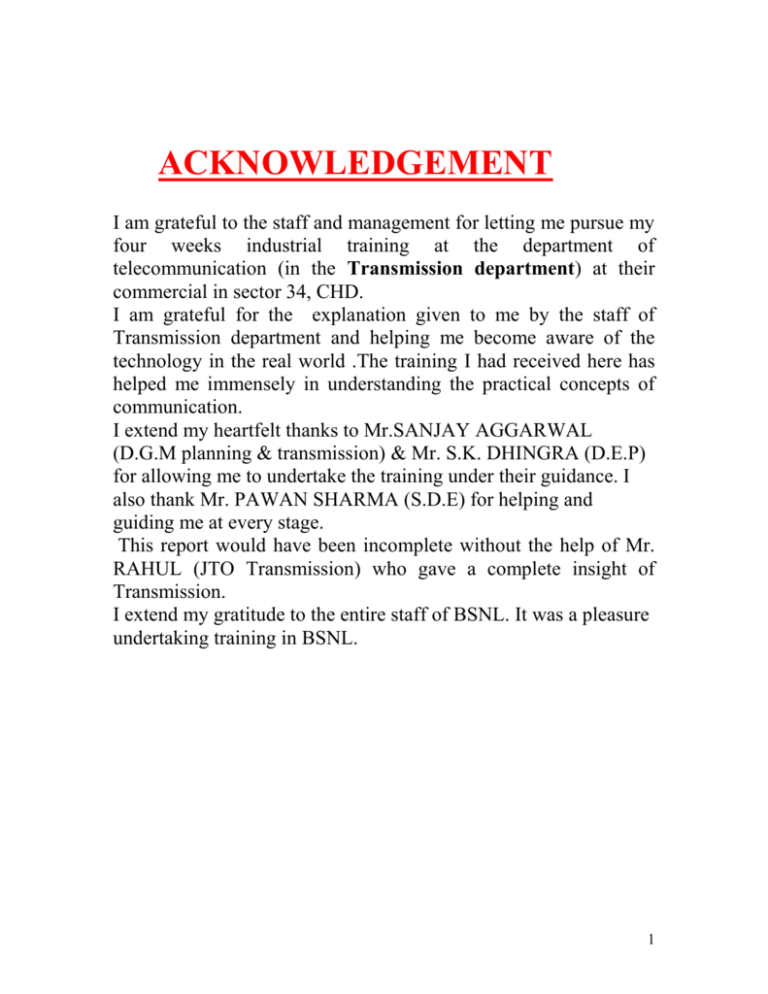
ACKNOWLEDGEMENT I am grateful to the staff and management for letting me pursue my four weeks industrial training at the department of telecommunication (in the Transmission department) at their commercial in sector 34, CHD. I am grateful for the explanation given to me by the staff of Transmission department and helping me become aware of the technology in the real world .The training I had received here has helped me immensely in understanding the practical concepts of communication. I extend my heartfelt thanks to Mr.SANJAY AGGARWAL (D.G.M planning & transmission) & Mr. S.K. DHINGRA (D.E.P) for allowing me to undertake the training under their guidance. I also thank Mr. PAWAN SHARMA (S.D.E) for helping and guiding me at every stage. This report would have been incomplete without the help of Mr. RAHUL (JTO Transmission) who gave a complete insight of Transmission. I extend my gratitude to the entire staff of BSNL. It was a pleasure undertaking training in BSNL. 1 DEPARTMENT OF TELECOMMUNICATION CONNECTING PEOPLE TOGETHER FUNCTIONS Apart from policy making, the main functions of the Department Of Telecommunications (DOT) are planning, engineering, installation & operation of telecommunication services all over India & with other countries. The department is also responsible for grant of licenses to private sector operators for providing basic & value added services in various cities & telecom circles as per approved policy of government. The department also allocates frequency & manages radio communications in close coordination with the international bodies. It is also responsible for enforcing wireless regulatory measures & monitoring the wireless transmissions of all users in the country. B.S.N.L is one such telecommunication department which provides with the facilities like cellular mobile telephone services, public mobile radio trunk, radio paging, remote area service etc. 2 INTRODUCTION TO B.S.N.L On October 1,2000 the Department of Telecom Operations, Government of India became a corporation & was christened BHARAT SANCHAR NIGAM LIMITED(BSNL). Today BSNL is the No.1 Telecommunications Company & the largest Public Sector Undertaking of India & its responsibilities include improvement of the already impeccable quality of telecom services, expansion of telecom network, introduction of new telecom services in all villages & instilling confidence among its customers. Today with a aprx. 43 million line capacity, 99.9% of its exchanges digital, nation wide Network Management & Surveillance system(NMSS) to control telecom traffic & nearly 3,55,632 route kms of OFC network, BSNL is a name to reckon with in the world of connectivity. Along with its vast customer base, BSNL’s financial & asset bases too are vast & strong. Consider the figures, as they speak volumes on BSNL’s standing: The telephone infrastructure alone is worth about Rs.1,00,000 crore (U.S.$21.2 billion). Turnover of Rs.22,000 crores (US 4.6 billion) 3 MISSION OF BSNL IS“To provide the world class Telecom Services on demand using State-of-Art Technology for the value added Customers at affordable price”. SERVICES PROVIDED BY B.S.N.L. 1.TARANG(WLL Mobile Service)-WLL is wireless in local loop. WLL is a communication system that connects customers to the Public Switched Telephone Network i.e. Landline, Mobile(GSM) and WLL(CDMA) using radio frequency signals as a substitute for conventional wires for all or part of the connection between the subscribers & the telephone exchange. It may be used for connecting remote & scattered rural areas, helping relieve congestion of connections, mobility without any airtime charge. 2.SANCHAR NET- Today, the internet has become a worldwide phenomenon providing better communication. Sanchar Net provides free all India roaming & enables it’s users to access their accounts from anywhere in country except in new Delhi & Mumbai. 3.CELLONE –BSNL produced India’s biggest cellular service, CELLONE(POSTPAID SERVICE) which brings cellular telephony to the masses. This ambitious service uses state-of-the-art GSM technology to attain global excellence & leadership in business. It serves the single objective, to provide better communication. 4.BFONE-Gone are the days when telephones use was restricted only to make & receive calls. BSNL offers phone plus services like Answering Machine Service(AMS), SMS on landline,, Call waiting, Hot line, Call transfer etc. 5.EXCEL-BSNL produced another cellular service, EXCEL which is a PREPAID SERVICE which brings cellular telephony to the masses. It serves the objective of providing better communication. 6 ISDN:-Integrated Service Digital Network Service of BSNL utilizes a unique digital network providing high speed and high quality voice, data and image transfer over the same line. It can also facilitate both desktop video and high quality video conferencing. 4 7.Leased lines and dotcom:- BSNL provides leased lines for voice and data communication for various application on point to point basis. It offers a choice of high, medium and low speed leased data circuits as well as dial-up lines. Bandwidth is available on demand in most cities. Managed Leased Line Network (MLLN) offers flexibility of providing circuits with speeds of nx64 kbps upto 2mbps, useful for Internet leased lines and International Principle Leased Circuits The different divisions of the telephone exchange are: Administrative department: Here, various administrative functions like employee database, new recruitments, transfers of employees, policies and important decisions are made, Commercial department: Here, various commercial activities like applying for a new telephone, shifting of telephone, malicious call tracing etc are made, Planning department: It has two parts: Exchange planning: It handles the setting up of new exchanges after considering their need, their technology, their capacity, the BHCA (busy Hour Call attempts) of the area, etc Cable planning: This handles the setting up of new cables according to the existing need using the best types available and making decisions like where to dig and install the cables using what equipment, etc. Indoor department: This includes the staff and the technicians which are sitting in the exchange including those providing facilities like 197, etc Outdoor department: This includes the staff that is employed to work outdoors of the exchange like linesmen, etc TRA department: Here, the most important function is to meter the calls and to provide the bimonthly telephone bills so as to enable the department to earn revenue for its services, If the database in this department fails, all the existing records are lost, Data is stored in magnetic disks and tapes. 5 PHYSICAL CONNECTIVITY BETWEEN SUBSCRIBER’S TELEPHONE AND TELEPHONE EXCHANGE CABLE NETWORK USED It consists of three types of copper cables. 1. Primary Cable :- It is the cable, which is connected from line side of M.D.F. to the cabinet. It is an underground cable. It consists of particular number of secondary cables. 2. Secondary Cable :- It is the cable, which is connected from cabinet to the pillers 3. Distribution Cable :- It is the cable, which is connected from pillars to the distribution pole . 4. Drop wire :- It is a pair pf copper wire, which is connected from the distribution pole to the subscriber’s telephone. Exchange & Main Distribution Frame(MDF) are connected physically to each other with the help of simple copper cables. From MDF, PRIMARY CABLES are laid upto the different CABINET locations, where cabinets are Elmira type boxes placed on the roadside. Now a days Cabinets are not used .These primary cables are pairs of wires eg.800 pairs given to a single cabinet, 1200 pairs to another & so on. From the Cabinet, SECONDARY CABLES are laid. These are connected to the PILLARS of different locations. Secondary cables are the further divisions of the already laid primary cables of a Cabinet eg. out of 800 PC, 400 pairs are given to one 6 Pillar, 200 to another & 100 to other Pillar location. From the Pillar DISTRIBUTION CABLES are spread to DISTRIBUTION POLES (DP), different number pairs are given to different locations of DP eg.out of 200 divisions of 50,100,20,20,10 are made according to the requirements of the locations to which connection is given. The different cables laid up till now are all underground connections. The DP consists of CT BOX, through which DROP WIRE is attached from one end & to the subscriber’s telephone on the other end, hence giving us the connectivity. 7 EXCHANGE BLOCK LAYOUT-The various divisions associated within Telephone Exchange are shown in following block diagram. MAIN DISTRIBUTION FRAME (MDF) & OCS SWITCH ROOM (FETEX,OCB, E10B) POWER PLANT ROOM TRANSMISSION ROOM ( OFC ROOM) TELEPHONE EXCHANGE 8 M.D.F. & O. C.S. UNIT:DEPARTMENT 1 COMPUTER ROOM The staff supervised us around the computer room showing us the various functions performed by the computer. The various computer terminals are: 1. MAIN COMPUTER I.V.R.S MAIN COMPUTER With the help of this computer terminal we are able to keep check on the total no. of telephones present in a certain exchange. 2. I.VR.S.:With the help of this computer, which is called the I.V.R.S. (Interactive Voice Response System), we can note down the incoming calls of complaints of faulty telephones. This system can book all the complaints without any external interference. The voice response equipment, available as an option is used for services that indicate charging information, change of directory number to calling subscribers’ etc. The voice response equipment can compose messages for their services. 9 3. MDF –MAIN DISTRIBUTION FRAME The main function of M.D.F is to connect the exchange side with the line side. It is made up of two sides that is the Exchange side and the Line side. Basically the MDF consistsof CT boxes .These CD block which help in connecting the Exchange as well as the Subscribers. MDF is mainly a maintenance division which checks & repairs the faults. BASIC OVERVIEW OF MDFEXCHANGE SIDE:Exchange side is the where all the cable wires are connected coming from the exchange. LINE SIDE:Line side the side where all the wires are connected coming from the subscriber’s place. JUMPER EQUIPMENT NUMBER VERTICAL NUMBER *EUIPMENT NO.- Various equipment no.’s into various exchanges like 1. FETEX-no. 66 & 64 2. OCB-no. 62 3. E10B-no. 60 & 61 Equipment no. can be same as these are taken from one exchange. There is different NE or LL for different lines which are allotted by exchange. *VERTICAL NO. It is used to terminate the primary wire and used to connect the exchange with outside line.There are 48 verticals given no.’s like V1,V2,V3-----V48 in Sec34 MDF. Each vertical has 10 C.T. boxes & each C.T. box has 100 numbers. Thus from single vertical 1000 telephone connections can be given. Vertical no are always different. *JUMPER-It is a red & white wire using ground tool connecting equipment number (NE or LL) to the vertical number. NE LL : - Equipment Number : - Line Location 10 *HEAT COIL-It is used on the vertical side so that if some short circuit occurs, then it prevents extra current which may otherwise damage the lines. We give the following commands on the computer when there is any fault in the line ROT (Right on Test) :- The phone was working right when the test was being conducted. Earth :-When the resistance is less than 250 K/amp then we write that the lines are earthed and we enter E as code. FP-Foreign Potential :- When the DC Voltage is less than DV i.e. – 45 V or 50 V then we give the name of fault as FP. BK (Break) :- When there is a capacitance less then the name of the fault is given as BK. Contact :- This fault occurs when both the wires are connected with each other. 11 SWITCH ROOM:DEPARTMENT 2 E-l 0 B (SWITCH ROOM) ESTABLISHMENT OF E10B The first E-l0-B system (a training model) was commissioned at ALTCC, Ghaziabad in July 84. The first commercial E-I0-B system was setup at Bombay in April 85 supporting 10,000 lines. Also 22,000 lines of digital TAX (E-I0-B type) have been installed at 16 stations all over the country.(The first at Agra in Feb. 87) Palaghat (Kera1a) unit of ITI manufactures E-I0-B TAX equipments. Another ITI factory at MANKAPUR in GONDA (UP) produces annually 500,000 E-l 0B local lines EVOLUTION OF E-10B SYSTEM The predecessor of E-10B is the E-10A system developed in France in early Seventies. Based on the structure of E-10A, a more powerful\system with a significantly higher call handling / traffic capacity was developed in early 80's. The first E-10system was commissioned at BREST in FRANCE. The system has many versions. Tile INDIAN version is the 384 PCM versions and can handle max traffic capacity of 4000 erlangs. The BHCA is 1,90,000. APPLICATIONS OF THE E-10-B SYSTEM (a) LOCAL EXCHANGES These exchanges terminate local subscriber lines and are connected to other exchanges in the local network. The limit of max traffic handling capacity is 4000 erlangs. Within this, any proportion of subscribers and junctions is possible. (b) LOCAL, TRANSIT, TANDEM EXCHANGES E-10B system can be used to carry pure transit traffic. Here, subscribers line providing terminating equipments will not be provided. Only equipments needed for connecting junctions will be provided. 12 (c) TAX Here, the system provides for termination of long distances circuits. Digital Tax’s has a max capacity of 11,000 lines (o/g and I/g) in 384 versions. (d) LOCAL CUM TRANSIT OR TAX The facilities of local and transit can be combined. FACILITIES AND SERVICES TO THE SUBSCRIBER (I) Call forwarding (2) Short code Dialing (3) Malicious call tracing (4) Conference calls (5) Call waiting (6) Detailed billing (7) Automatic alarm call (8) Barred access (9) Hotline facility (10) Pushbutton telephone (11) Last number redial Because of its modular structure, E-10-B can be expanded to meet its demands and new services can be introduced with modification of software. Features of E10-B system The system is based on these features. (I) Stored program control (2) TDM digital switching (3) PCM principals and techniques (4) Segregation of switching and management facilities. (5) Distributed control using dedicated microprocessors, e.g. 8085, ELS-48 (6) Centralized management for a group or E-1 0-B exchanges. Stored Program Control Control functions relating to call processing are carried out by execution of program instructions stored in the memory of computers. In 13 electromechanical systems, these functions are hardware based. In E-l0B, these arc software based. TDM Digital Switching The system switches signals to digital form. Analog signals are converted to TDM multiplexed digital signals, prior to switching. PCM Principles Systems have been developed for 30 channels PCM corresponding to Relevant CCITT recommendations. Segregation b/w switching and management functions Switching functions like reception of dialed digits, the storage, the analysis, routing of the call etc. arc performed by the control unit in the exchange, which has a decentralized architecture, employing dedicated processors. Functions like subscribe lines and circuit group management, faults and alarm management etc. are done by a separate mini computer, located at a centralized operation and maintenance center (OMC), which is common for a number of E-10-B exchanges. OMC and switching centers are interconnected by PCM links. They could be in the same- premises or far apart. Distributed control Call handling and call processing functions like scanning of subscriber lines, detection of loop status, reception and storage of digits etc. are distributed over functional units. Dedicated processors like Intel 8085 and dedicated mini computers like ELS-48 handle them. Centralized management for a group of E – 10 B exchanges The O&M functions for a group of E-I 0-8 exchanges (upto a maximum of 6 exchanges or '80,000 lines) are carried out by single OMC, which is connected to various exchanges by PCM links. The E-IO-8 exchange consists of three blocks: a. Connection units 14 b. Switching networks c. Control units Connection Units They act as an interface between external environment (i.e. subscribers and trunks) and central units. Units, which manage the generation and transmission of, digitalized tones and frequencies and dissemination of recorded announcements to subscribers are also called connection units. Switching networks (CX) This is a TDM switching network having a three stage time-spacetime architecture. It uses four wires switching (4W) for connecting time slots of calling and called parties. Control Units The control unit handles telephone call setup, supervision, clear down and charging functions. Specifications of E-10B:I. Number of switchable PCM links: 384 2. Processing capacity: 1,90,000 BHCA 3. Traffic handling capacity: 4000 erlangs 4. Subscriber exchange: 45,000 lines & 5000 circuits SYSTEM FEATURES:I. Time division multiplexing 2. PCM to CCITT standards 3. 2 Mbit/s PCM link 4. 30 telephone channels per PCM link 5. 8 bits per telephone channel 6. Stored program control 7. Dedicated processors for program control 8. Non dedicated processor for operation functions 15 SUBSCRIBER LINE 1. Dial or pushbutton VF telephone 2. Maximum loop resistance inclusive of telephone set 2400 ohms 3. Ringing current: 80 V, 25 and 50 Hz ENVIRONMENTAL CONDITIONS Exchange: 1. Ambient temp of air drawn into racks: 18 - 20 deg C 2. Relative humidity: 30 - 70 % Satellite exchange: 1. Ambient temp: 5 -35 deg C 2. Relative humidity: 20 - 80 % DIMENSIONS OF E-10B:1. Rack dimension: height: 2 mt, width 0.75 mt, depth 0.5 mt, Distributive floor loading, less than 500 kg/sq. mt 2. Floor area: 45,000 lines subscriber exchange = 154 sq. mt 11,000 lines subscriber exchange = 90 sq. mt POWER SUPPLY REQUIREMENTS:1. Exchange and satellite exchange = -48 V 2. OMC: 220 V, 50 Hz 3. Power supply current online: 23 - 60 mA 4. Loop resistance: 1500 to 2400 ohms CALL PROCESSING IN E-IO B EXCHANGE The following types of call processing has been described: 1) Local call 2) I/C call 3) O/g call 16 A call is processed in the following four stages: 1) Pre-selection 2) Selection 3) Connection and charging 4) Release PURPOSE OF MDF AND DDF IN E-10B EXCHANGE E-10B switching system is a digital switching system and accepts both analog and digital signals. The signals from subscriber are analog whereas the trunk signals are digital (if coming from analog source, these are converted into digital 30 channel PCM signals and then fed to switch room). The analog signals are received by CSE and digital signals by URM in E10B system. For these two types of signals we use two types distribution frames in E-10B. One is called Main Distribution Frame (MDF) and the other one is called Digital Distribution Frame (DDF). 17 POWER PLANT SYSTEM:DEPARTMENT 3 In Sector 34 exchange there are two main exchanges namely FETEX 150 and E 10 B exchange. Both are provided with different batteries and power plant system, which supply power to whole of the exchange. PRINCIPLE OF FLOAT WORKING IN POWER PLANTS Telecommunication systems requires electrical energy for conversion of speech signals to electrical signals, exchange switching, transmission over a medium. In telecom systems D.C. Power supply is only used due to the following reasons. (a) Harmonics of A.C. may affect the speech signals. (b) Relays used in telecom systems are more sensitive to D.C. than A.C. (c) Transistors and I.C’s etc. being unidirectional devices, the use of D.C. has become necessary. (d) Arranging standby source to A.C. is difficult compare to D.C. for which secondly cells can be used as S/B source. (e) Not hazardous to human life. SOURCES OF POWER: Telecommunication services are to be provided uninterruptedly round the clock and throughout the year. For any uninterrupted power supply system, two sources are required. One is Normal or Main source “ and another is “Secondary. By name we can define “Normal source is one which supplies power to the load round the clock” and “secondary source is one which supplies power to the load only during the absence of power from normal source”. Hence it is a must to convert AC from commercial mains to D.C. 18 POWER PLANT FLOAT RECTIFIER + 3- phase power supply R Y B FLOAT RECTIFIER 48V EXCHANGE 48V BATTERY CHARGER The power plant is the plant from where the power is supplied to the whole of exchange. It is a must for the proper functioning of the exchange. It has a tripping panel connected at the start of main AC supply voltage i.e. volts. This three phase is given to the floating rectifier which connects 415V supply to 50V DC which is necessary for the working of equipment of the exchange. A power plant consists of the following parts : Battery System Inverters Float rectifiers Float cum battery charger Generators The following are their description :- BATTERY SYSTEM :In the 34 exchange there are five batteries which are use for two exchanges. 1. BATTERY SYSTEM FOR FETEX In this system there are three batteries. All these batteries are connected in parallel to each other and to the float rectifiers. Two batteries which are totally maintenance free are used having the capacity of 500 AH (Ampere-hour) where as third battery has its capacity of 1500 A.H. Each battery consists of 24 cells of 2.1 Volts 19 making the total voltage to 50.4 volts. All these batteries have been designed for a load of 10 hours. 2. 3. BATTERY SYSTEM FOR E 10 B This system consists of two batteries having the capacity of 5000 A.H. These batteries are not maintenance free but are sealed batteries. Its specific gravity has to be checked daily with the help of hydromenter. The lower limit for the Sp, Gravity is 1160 below which the battery breaks down & the upper limit safer limit is 1260. INVERTER There are two inverters for the whole power plant. It is the device, which converts DC signal of 52.8 volts into AC signal of 220 volts & 6 ampere. Both of the exchanges have their own inverter & both the inverters are of 6 KVA. 4. FLOAT RACTIFIER The main function of the float rectifier is it converts AC signal of 415 into DC signal of 52.8 volts. The float rectifier is connected in parallel to the AC main or the battery when the AC main is “off”. In FETEX the output current is 200 ampere & in E 10 B the output current is 600 ampere. 5. OUTPUT CABINET It is the cabinet from which we take Output of the float rectifiers from here we get 52.8 VDC & 2000 ADC. 6. FLOAT RECTIFIER CUM BATTERY CHARGER As the name suggest this system act as the float rectifier as well as batter charger. It works as a battery charger when the AC main is “On” & as a rectifier when the AC main is “Off”. 7. GENERATORS There are four sets of generators, two each for both the exchanges. At the time of power failure one set works for each exchange & the other set is stand by set. For FETEX the generators are of 270 KVA, 216KW, 375 ampere, 415 volts & the P.F. is 0.8 lagging. For E 10 B the generators are of 225 KVA, 180 KW 312 ampere, 415 volts & the P.F. is 0.8 lagging. Daily checks for the generators :Check water level Check engine oil. Check air filter & dust blow. 20 Clean engine surroundings. 21 TRANSMISSION SYSTEM DEPARTMENT 4 Introduction To Analogue And Digital Transmission System Introduction The telecommunications network can transmit a variety of information, in two basic forms, analog and digital. This information may be transmitted over a circuit/channel or over a carrier system. Where a circuit/channel is a transmission path for a single type of transmission service (voice or data) and is generally referred to as the smallest subdivision of the network. A carrier, on the other hand, is a transmission path in which one or more channels of information are processed, converted to a suitable format and transported to the destination. Transmission System To overcome the limitations of open wire lines and underground cables for providing long distance communication speech circuits Carrier, Co-axial, Microwave, Satellite, Optic Fibre systems are utilised. Multiplexing Techniques There are basically two types of multiplexing techniques. 1. Frequency Division Multiplexing (FDM) 2. Time division Multiplexing (TDM) Fdm fids its application in analog transmission system The digital transmission uses TDM Time Division Multiplexing Basically, TDM involves sharing a transmission medium by a number of circuits, in time domain. This can be achieved by establishing a sequence of time periods during which individual channel (circuit) is transmitted. Thus the entire bandwidth is periodically available to each channel. 22 Each channel is sampled at a specified rate and transmitted for a fixed duration. All channels are sampled, one by one and transmitted. Normally, all the time durations are equal. Each channel is assigned a time duration with a specific common repetition period. The channels are connected to individual gates, which are opened one by one, in a fixed sequence. At the receiving end also, similar gates are opened in unison with the gates at the transmitting end. The signal received at the receiving end will be in the form of discrete samples, which are combined to reproduce the original signal. Thus, at a given instant of time, only one channel is transmitted through the medium, and by sequential sampling, a number of channels can be staggered in time, instead of transmitting all the channels at the same time as in FDM systems.TDM Technique us used in Digital Transmission Systems and Digital Switching Systems, where the discrete values of the codified signal are employed. Advantages of Digital Systems 1. 2. 3. 4. 5. Ease of Multiplexing Use of modern technology Noise-immunity Accommodation of Non-voice services Ease of monitoring of performance PCM systems use TDM technique to provide a number of circuits on the same transmission medium, viz., underground cable pair or a channel provided by carrier, coaxial or microwave system. In PCM, discrete points of speech are sampled; the amplitudes of these points are quantised and transmitted over a medium after suitable encoding. At the receiving end, the message is decoded to get back the quantised signal for ultimate reconstruction of original signal by passing it through low-pass filter. To obtain PCM signal from several analogue signals, several processes like Filtering, Sampling, Quantising, Encoding and Line Coding are required. By employing TDM technique, 30 speech channels are combined to achieve a 30 chl PCM system that is popularly known as a 2 Mb system. One PCM has 32 information channel of bit rate 64Kb/s. Out of 32 channel ,30 are the voice channels & 2 channels are used for signaling & controlling. Optical Fiber System An Optical Fiber Transmission System uses light waves as carrier of the information signals. These light waves are transmitted from one place to another place through an optical fiber using the principle of Total Internal Reflection. Over 23 an Optical Fiber System, large bulk of information can be sent with very low distortion. BASIC FIBRE OPPTIC LINK TRANSMITTER INFORMATION CHANNEL (MEDIUM) RECIEVER *TRANSMITTER- It generates the messages & converts it into a form suitable for transmission over the information channel, it basically converts electrical signal to optical signals which is transmitted through fiber. Information travels from the transmitter to the receiver over the information channel. *INFORMATION CHANNEL- There is basically two types of information channels: Unguided channels:- atmosphere is an unguided channel over which waves can propagate. Guided channels:- these are those which guide the electromagnetic waves through them. Two wire lines, coaxial cable & waveguide are examples of it. Guided channels have the advantages of privacy, no weather dependence, and the ability to convey messages within, under & around physical structures. *RECEIVER- It receives the optical signals from the fiber & converts the same to its electrical equivalent. FIBER OPTICS- Optical fiber is a new medium, in which information (voice, data or video) is transmitted through a glass or plastic fiber, in the form of light, following the transmission sequences given below: 1. Information is encoded into electrical signals. 2. Electrical signals are converted into light signals. 3. Light travels down the fiber. 4. A detector changes the light signals into electrical signals. 5. Electrical signals are decoded into information. 24 The following table gives the details about systems and their channel capacities. PDH (Plesio-chronous Digital Hierarchy) SYSTEM 8 Mb 34 Mb 140 Mb 565 Mb Table CAPACITY 120 Chl 480 Chl 1920 Chl 7680 Chl SDH (Synchronous Digital Hierarchy) SYSTEM STM-1 (155.52 Mb) STM-4 (622.08 Mb) STM-16 (2488.32 Mb) STM-64 (9953.28 Mb) CAPACITY 1890 Chl 7560 Chl 30240 Chl 120960 Chl Introduction to SDH It is an international standard networking principle and a multiplexing method. The name of hierarchy has been taken from the multiplexing method which is synchronous by nature. The evolution of this system will assist in improving the economy of operability and reliability of a digital network. Merits of SDH (i) Simplified multiplexing/demultiplexing techniques. 25 (ii) Direct access to lower speed tributaries, without need to multiplex/demultiplex the entire high speed signal. (iii) Enhanced operations, Administration, Maintenance and provisioning capabilities. (iv) Easy growth to higher bit rates in step with evolution of transmission technology. (v) Capable of transporting existing PDH signals. (vi) Capable of transporting future broadband (ATM) channel bit rates. (vii) Capable of operating in a multi-vendor and multi-operator environment. Advantages (i) Multi-vendor environment . (ii) Synchronous networking: SDH supports multi-point or hub configurations whereas; asynchronous networking only supports point-to-point configurations. (iii) The telecoms need the ability to administer, surveil, provision, and control the network from a central location. (iv) Positioning the network for transport on new services: LAN to LAN, HDTV, interactive multimedia, video conferencing. (v) HUB: A hub is an intermediate site from which traffic is distributed to 3 or more spur. It allows the nodes to communicate as an angle network, thus reducing the back-to-back multiplexing and demultiplexing. The different services it supports are: 1. Low/High speed data. 2. Voice 26 3. Interconnection of LAN 4. Computer links 5. Broadband ISDN transport S.D.H. Evolution S.D.H. evolution is possible because of the following factors: (i) Fiber Optic Bandwidth: The bandwidth in Optical Fiber can be increased and there is no limit for it. This gives a great advantage for using SDH. (ii) Technical Sophistication: Although, SDH circuitry is highly complicated, it is possible to have such circuitry because of VLSI technique which is also very cost effective. (iii) Intelligence: The availability of cheaper memory opens new possibilities. (iv) Customer Service Needs: The requirement of the customer with respect to different bandwidth requirements could be easily met without much additional equipment ADVANTAGES OF SDH OVER PDH The SDH transmission format has been designed to overcome the limitation of PDH & the present challenge is to migrate from PDH to SDH & the cost constraints of the network. PDH can be used only for point to point connection whereas when SDH is used for this purpose it is called as STM(SYNCHRONOUS TRANSPORT MODULE) & SDH is advantageous over PDH as it can be used for RING CONNECTION i.e. as ADM(ADD & DROP MULTIPLEXER) :-Add/Drop Multiplexer (ADM) Plesiochronous and lower bit rate synchronous signals can be extracted from or inserted into high speed SDH bit streams by means of ADMs. This feature makes it possible to set up ring structures, which have the advantage that automatic back–up path switching is possible using elements in the ring in the event of a fault. 27 SDH USED AS ADM-4 RING:An example to describe this is as follows:SECTOR 46 SECTOR 34 SECTOR 37 ADM-4 RING A single pair of OPTICAL FIBREs is used for these connections. This is advantageous as if a breakage occurs in any one of the links eg.in 46 & 37 connection then the Traffic which was to be transmitted from 46 to 37 would now be transmitted from 46 to 34 & then to 37 i.e. Traffic would reach the destination from the other side of the ring. Only SDH systems can be used in ring configuration. ORDER WIRE- It is very important & Essential feature provided with all kind of Transmission systems.With the help of this, we can directly communicate at the other end of Transmission System.This is normally used for communication with the other end when Exchange failure occurs. FIBRE OPTICS TRANSMISSION SYSTEM (FOTS): The transmission systems using OPTICAL FIBRE as Physical media are called FIBRE OPTIC TRANSMISSION SYSTEM The figure shows a simplified Block diagram of the FOTS that comprises of the following Sub-Systems. Digital distribution frame (DDF) Transmission system Fiber distribution frame (FDF) Wall side closure (WSC) Spare cable box (SPC) 28 The following figure Explains the transmission of signal from One Exchange ( END A) to other Exchange (END B) through 140 Mb/s PDH Ssystem. Let the transmission start from exchange A. Traffic is given from exchange to the DDF at a signal rate of 2mbps.with the help of DDF has two sides, Local & System. The Traffic transferred from exchange A are received at the LOCAL side of DDF, further they are transferred to the SYSTEM side by the interconnectivity b/w the two sides with the help of U-LINKS..The system side wiring is directly extended to Transmission system. Ulinks are simple connectors providing connectivity between local side & system side. Now the Electrical signal of 2 Mb/s from Exchange is transmitted to the Transmission system. A Transmission system normally has a set of Multiplexing cards & OLT card ( optical line termination card). Firstly the Traffic enter the1st order MUXCARD,where 2/8Mb/s multiplexing is performed.then this 8 Mb/s multiplexed signalis given to 2 nd order mux card where 8/34Mb/s multiplexing is done now this 34mb/s signal is given to 3rd order Mux.where 34/140Mb/s conversion is performed. Now the signal rate is 140Mb/s Digital electrical signal .Now this signal is fed to OLT card which converts the 140Mb/s input signal in to optical signal with the help of inbuilt LASER. Following figure explains the 1st ,2nd , 3rd & fourth order multiplexing. 2.048 Mb/s Primary PCM MUX (30chnls) Second Order MUX ( 120 chnls) Third Order MUX ( 480 chnls) Fourth Order MUX ( 1920 chnls) 29 OLT card has two output ports which are Trans port & Receive port.now this 140Mb/s optical signal is transmitted to FDF with the help of patch cords. Patch cord is a piece of FIBRE having a connector at both ends.one end of patch cord is connected with Ports of OLT card & other end connector is terminated at one side of FDF.( Fibre Distribution frame) All the Optical fibre coming from End B e.g. 6 Fibre cable is laid b/w End A & End B, are terminated to second side of FDF. The 6 Fibre OFC is laid underground. & provided in to Transmission room. In transmission room it ,firstly enters in to the spare cable box where the spare cable is kept in rolled position. Now this 6 fibre cable is given to WSC ( Wall side closure) which is mounted on wall of transmission room.In OFC all the 6 fibres are in bundled position. In WSC the coating of each fibre is removed & each fibre is taken out & spliced with the naked end of Pigtail. Pigtail is a piece of Fibre having connector only at one end. The connector end of pigtail is terminated at FDF.Thus all the 6 Fibres are terminated on FDF in above detailed manner. The same arrangement is there at End B, to terminate all fibres on End B FDF. Now the 140Mb/s optical signal is transmitted through the OFC & received at the Rx Port of OLT card of End B system now this optical signal is converted in to 140Mb/s electrical signal with the help of Inbuilt Photo detector in OLT. Now this signal is demultiplexed in to 34Mb/s & further demultiplexed in to 8Mb/s then in to 2Mb/s. Now this 2 Mb/s signal is given to system side of DDF& U link provides interconnectivity between system side & Exchange & finally this 2Mb/s signal is received by the Exchange of End B..Thus our End to End transmission of signal is complete. 30
